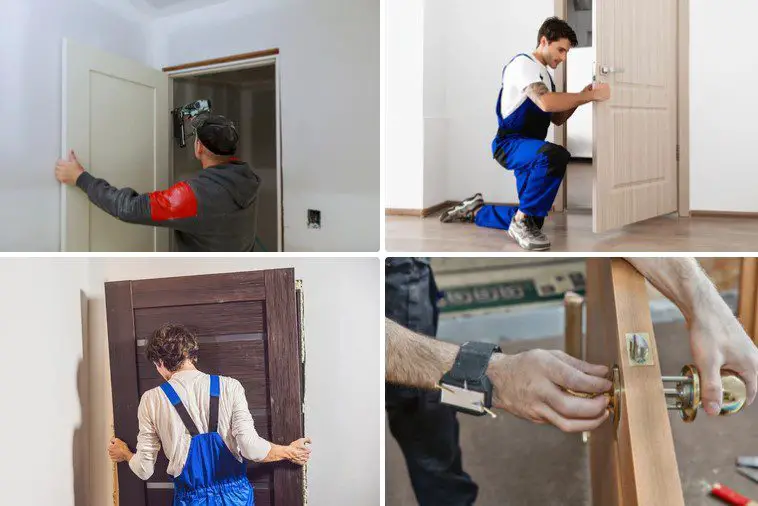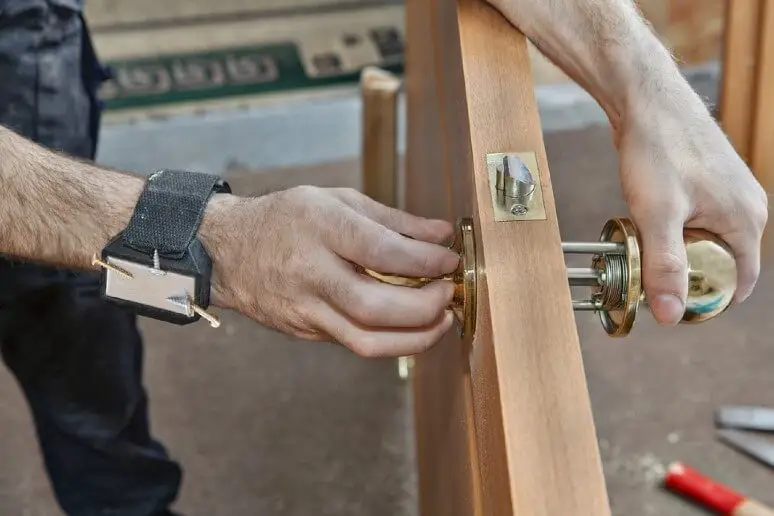Table of Contents
A method statement for wooden door installation typically outlines the step-by-step process for safely and effectively installing a wooden door.
Summary of the article’s installation methodology for wooden doors:
- Semi-solid-core, non-fire-rated wooden doors.
- Custom-made wooden doors and access doors with semi-solid cores that are not fire-rated.
- Raised panels made of solid timber, stained varnish, and wood veneer.
You may also like this: Method Statement of Metal Door Installation
Resources for Application
Delivery, Storage, and Handling of Wooden Doors
Store doors in well-ventilated, clean spaces. To prevent wharfing, stack the doors flat and off the ground. There should be no further materials stacked on top of stacked doors.
All doors will be edge-packed with cardboard and plastic protection.
On wood blocks, store flat over the area above the floor.
A sticker identifying the exit door number and exit frame location is tagged on each exit door and frame.
Before being handed over, the final factory painting finish will be applied to all delivered doors and frames.

Wooden Door Installation
Locate the tagged doors in accordance with the approved shop drawing and door schedule by checking the tags.
To ensure that the frames fit the openings, check the measurements, angles, and levels against the finish floor line reference. Adjust the door’s alignment and fit in the frame to the required elevations and locations.
Fix door frames with anchor bolts placed in accordance with approved shop drawings; these bolts will subsequently be covered by wood caps.
As per the approved shop drawings, install, position, and fit the doors in the frames with a consistent clearance and bevel to provide 3mm at the heads, jambs, and between pairs of doors.
Nails will be used to secure the architraves, which will then be covered with wood putty. We’ll use silicone to close up all visible spaces around us.
Completed wooden doors must work smoothly and without rattling or binding.
Eliminate stains and cleaning agent remnants.
Modifying and Safeguarding Wooden Doors
To ensure that wooden doors are in good condition at the time of significant completion, protect doors as the manufacturer advises.
Don’t use doors that don’t swing open or operate smoothly.
Replace any broken doors during installation.

Quality Control
Inspect the installed door for any visible defects or issues.
Test the door’s operation, including opening, closing, and locking.
Ensure there are no gaps between the door and frame that could affect insulation or security.
Cleanup
Remove all waste materials and debris from the work area.
Return all tools and equipment to their designated storage areas.
Dispose of waste materials in accordance with local regulations.
Documentation
Record any issues or deviations from the installation process.
Obtain customer sign-off and approval of the completed work.

Doors Installation Costs
The breakdown of the cost for a door installation might differ depending on a number of variables, including the type of door, local labor costs, extra features, and materials needed. The components that contribute to door installation cost are summarized below:
- Cost of the Door: The type and quality of the door you select will have a big impact on the total cost of the door. Basic inside doors and upscale custom outside doors are both examples of doors.
- Labor Costs: Labor costs will vary depending on the complexity of the installation, the skill level of the installer, and local labor rates. This covers tasks like removing the old door, putting in the new door, and making any adjustments required for a good fit.
- Hardware and Accessories: This category covers things like hinges, doorknobs, locks, handles, and other hardware. High-quality or specialized hardware may raise cost.
- Preparation and Finishing: Additional work, such as adjusting the door frame, trimming, painting or staining, and installing weatherstripping, may be required depending on the type of door and the state of the opening.
- Weatherproofing and Sealing: Exterior doors typically have weatherproofing and sealing procedures in place to minimize leaks and water intrusion. Caulking and insulation are two examples of this.
- Special Features: The cost of installing a specific door with features like windows, sidelights, or ornamental glass might rise dramatically.
Location: Depending on your geographic location and the local cost of living, labor and material prices can vary.
tag: # Method Statement for Wooden Door Installation

